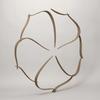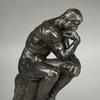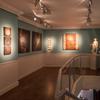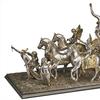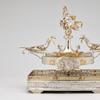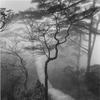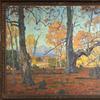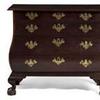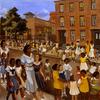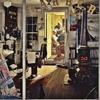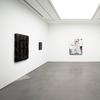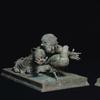Philadelphia Museum of Art Announces Major Gifts of American Art and $10 Million
- PHILADELPHIA, Pennsylvania
- /
- February 25, 2016
The Philadelphia Museum of Art announced today that its collection has been enriched by the bequest of more than fifty works of American art from the late philanthropist and art collector Daniel W. Dietrich II. Additionally, the Museum has received an endowment gift of $10 million from Mr. Dietrich’s charitable funds that will support a broad range of initiatives in the field of contemporary art.
The collection is rich in works by contemporary artists such as Cy Twombly, Philip Guston, Agnes Martin, Eva Hesse, and Paul Thek, and by other major twentieth-century American artists, among them Edward Hopper, Charles Demuth, Marsden Hartley, and Horace Pippin. Mr. Dietrich was also a lifelong admirer of the nineteenth-century Philadelphia realist Thomas Eakins and bequeathed to the Museum a major portrait by Eakins as well as photographs, drawings, and a large cache of Eakins-related archival materials.
Constance H. Williams, the Museum’s Chair of the Board of Trustees, stated: “Dan Dietrich’s gifts represent a remarkable act of philanthropy. I have no doubt that these generous gifts will be ranked in the same category as those made to the Museum by other great donors to our collection such as Louise and Walter Arensberg, Albert E. Gallatin, and, more recently, Keith L. and Katherine Sachs. Dan will be remembered as a collector of great insight and a quiet visionary whose commitment both to contemporary art and to this city’s cultural institutions was exceptional.”
Timothy Rub, The George D. Widener Director and CEO of the Philadelphia Museum of Art, noted: “Dan Dietrich’s life revolved around the arts, with interests that ranged from painting and poetry to music and theater. He had a deep and abiding love for contemporary culture and delighted in sharing this with others. While Dan was gracious and soft-spoken, he also acted boldly. It comes as no surprise, then, that his gifts to this institution are transformative, strengthening our rich holdings of contemporary art with works by artists he greatly admired such as Cy Twombly, Agnes Martin, and Philip Guston. What’s more, the generous gift from Dan’s charitable funds will enable us to create a new endowment entitled The Daniel W. Dietrich II Fund for Excellence in Contemporary Art. This will provide the resources that we need to continue to strengthen an already strong program in contemporary art and, as Dan wished, to encourage innovation and experimentation in this field.”
The works in the Dietrich bequest wonderfully complement the Museum’s holdings of nineteenth-century, modern, and contemporary art. It includes two important works by Cy Twombly: Untitled (Roma) (1961), and Untitled (Bolsena) (1969), from a series of fourteen large-scale canvases that the artist painted during a stay at Lake Bolsena, located north of Rome. Both paintings exemplify the artist’s distinctive style of mark-making and the profound lyricism that characterized his work. They represent a welcome addition to a collection of Twombly’s work that already includes his celebrated series, Fifty Days at Iliam (1978), which has been a cornerstone of the Museum’s collection since it was acquired in 1989.
The donation also includes two monumental paintings by Philip Guston: The Night (1977), and Kettle (1978). Each is emblematic of Guston’s provocative—and much admired—return to figuration following several decades of work as a painter of abstractions. These are the first paintings from this important period in the artist’s career to enter the Museum’s collection, and as such now enable the Museum to represent fully Guston’s remarkable achievements.
Dietrich was also a good friend of the artist Agnes Martin, who lived for many years in New Mexico. Martin made use of simple grid-like compositions to create the “ego-less” structure of paintings in which she sought to express a timeless sense of beauty. This donation includes four exceptional paintings by Martin, among them Leaf, Hill, and Play II, all from 1965, which was a critical moment in the artist’s career.
The bequest also includes fifteen works by Paul Thek, which makes the Philadelphia Museum of Art a major repository of the artist’s work and comes at a time when his remarkable accomplishments in many different media are the subject of renewed appreciation.
Edward Hopper’s Road and Trees (1962), the gift of which is accompanied by a closely related charcoal drawing, conveys a wistful, glancing view, perhaps from a car window, of a seemingly prosaic subject: a road that runs parallel to a copse of trees, their boughs silhouetted against sky, some gently outlined in sunlight. As with all of Hopper’s greatest paintings, the subject is simple, but its treatment is nuanced and deeply compelling. As the first painting by the artist to enter the collection, it complements the Museum’s extensive holdings of graphic works by one of the greatest American artists of the twentieth century.
Marsden Hartley’s The Rope and the Wishbone (1936), in which a braided loop of twine and a chicken bone occupy a shallow space of muted tones, may relate to the artist’s visits to Nova Scotia in 1935 and 1936. This painting adds significant depth to the Museum’s holdings of work from this important period in Hartley’s career.
The Dietrich bequest includes three important works by the self-taught African American painter Horace Pippin, including The Getaway (1939), a stark winter scene in which a fox makes off with a bird in its mouth; Study for Barracks (1945), which conveys the everyday activity of African American combat soldiers in a dugout during World War II; and The Park Bench (1946), which is often interpreted as a psychological portrait of the artist and was painted in the last year of his life. These paintings join three others in the Museum’s collection, which now comprises one of the richest holdings of Pippin’s work to be found anywhere in this country.
The work of Thomas Eakins, an artist for whom the donor had a special affinity, is represented in the bequest by a handsome three-quarter-length 1903 portrait of Eakins’s friend William B. Kurtz, who is depicted informally in a sports jacket that speaks to the sitter’s passion for cricket and cycling. The gift also includes many oil sketches, drawings, and photographs, as well as archival materials that add greater depth and breadth to the Museum’s renowned Eakins collection, which is the most comprehensive in the world. The oil sketches bequeathed by Dietrich relate closely to such major works in the Museum’s collection as The Old Fashioned Dress, and there is a rare life study of a nude woman’s back. Among the photographs by Eakins and his circle are several portraits of Walt Whitman that served as studies for an oil painting of the poet, and the frontispiece of the complete edition of Leaves of Grass. Sketches of the artist by his wife, Susan MacDowell Eakins, are included, as well as Eakins’s own palette and brushes and a tilt-top table that is most likely the one depicted in many of his paintings, such as the Museum’s Professionals at Rehearsal.
In addition to establishing The Daniel W. Dietrich II Fund for Excellence in Contemporary Art, Mr. Dietrich’s charitable funds have also provided funding both to support the maintenance of the collection that Mr. Dietrich bequeathed to the Museum and to complete the acquisition of the Paul Strand Collection, which enabled the Museum to add more than three thousand works to its collection by one of the pre-eminent photographers of the twentieth century.
Carlos Basualdo, The Keith L. and Katherine Sachs Senior Curator of Contemporary Art, stated: “A long-standing member of the Museum’s Contemporary Art Committee, Dan was an exceptionally kind and generous man whose sensibility was always attuned to artists and their work. His collection was a reflection of his personality and it was clear in every conversation I had with him how much he valued each and every object he had acquired. The establishment of The Daniel W. Dietrich II Fund for Excellence in Contemporary Art is a landmark in the history of the Museum’s commitment to this field. It will enable us to innovate, take risks, and build capacity by developing ambitious exhibitions and programs, presenting the collection in new ways, and working collaboratively with artists.”
On Friday, February 26, Edward Hopper’s Road and Trees will be on view in Gallery 124. Other works from the Dietrich collection will be placed on view in months to come.
About Daniel W. Dietrich II
Daniel W. Dietrich II lived in Chester County, Pennsylvania. He had a lifelong interest in the arts, including theater, music, film, literature, and the visual arts. He was a longtime supporter of the Philadelphia Museum of Art, and was a member of the Anne d’Harnoncourt Society and served as a member of the Museum’s Contemporary Art Committee. He also provided significant support to many other cultural institutions, including the Institute of Contemporary Art in Philadelphia and the Association for Public Art, for which he acquired Symbiosis, Roxy Paine’s large-scale sculpture located on the Benjamin Franklin Parkway.


